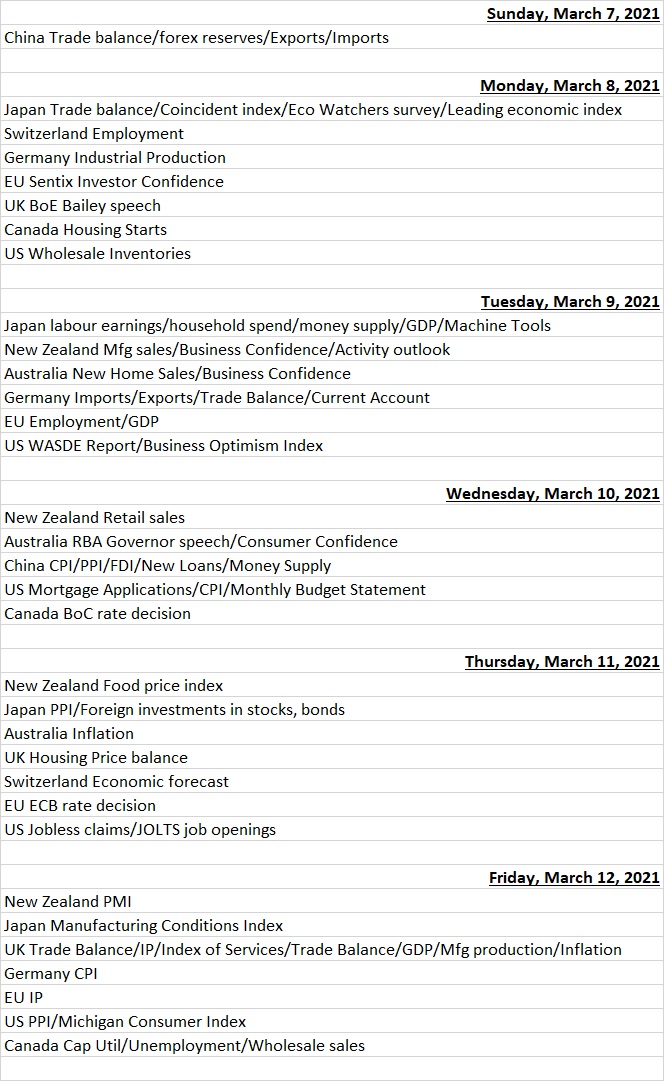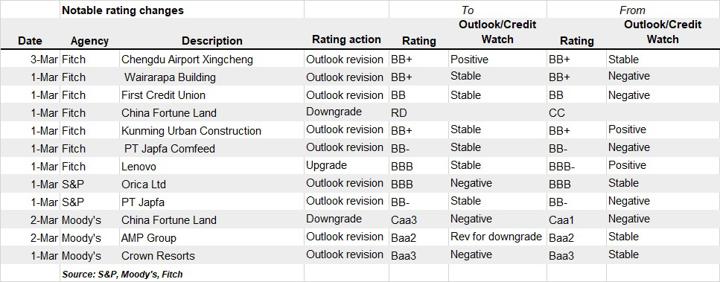Economic events
Financial markets this week should see a rebound in risk appetite although it is likely that investors will pick value over growth sectors after US jobs data blew past expectations and stoked worries this could kick up inflation. US Treasuries will remain in focus amid concerns an uptick in real yields could warrant a policy response from the Fed.
Still Federal Reserve Bank of St. Louis President James Bullard comments that unless there is disorderly trading or something that looks panicky, there is unlikely to be any policy action. This was interpreted as ruling out purchasing more longer-dated securities or an Operation Twist like move.
“Our forecast is that yields wont rise sharply in the coming months enabling equity prices to recover further in time,” said Capital Economics in a note while adding the real yield of 10-year TIPS poses more of a threat to the stock market than higher inflation compensation.
The Fed is expected to hold interest rates near zero at its Mar 16-17 meeting and reiterate it will keep buying bonds at a $120 billion monthly pace until it sees substantial further progress on employment and its 2% inflation goal.
President Joe Biden’s $1.9 trillion coronavirus relief plan was passed by the Senate with a 50-49 vote on Saturday and with the daily rate of vaccinations having quadrupled at a time of plummeting new coronavirus infections, the world’s largest economy is set for a strong rebound.
On the economic front, regional exports data will be parsed to see if the outsized growth rates will be reported due to the base effect after headline export growth in China surged to a much stronger-than-expected 60.6% y-o-y in January-February.
“The post-Covid recovery of global demand is also supporting Asian exports. By product type, electronics and automobile are leading the strong growth trend, more so amid the ongoing shortage of semiconductor chips for the automobile sector, which is pressuring these exports higher,” said ING’s Senior Economist Prakash Sakpal. ING expects a 26% surge in Taiwan’s exports in the first two months of the year.
Fund flow
The spike in US Treasury yields and the US Federal Reserve’s nod to higher rates spooked investors and saw EM hard currency funds recording sizable outflows in the week up to 3 March – the biggest outflow since March 2020. But emerging Markets Equity Funds posted their eighth consecutive inflow, and 23rd in the past 24 weeks, with China recording the largest inflow in the Asia ex-Japan country group ahead of the annual session of National People’s Congress.
“The sentiment towards EM risk in general remains intact, reflected by EM equity funds continuing to attract inflows,” said Barclays analysts Andreas Kolbe, Fabian Herold and Badr El Moutawakil in a note while adding that returns differentials had widened with EM credit returns dented by the sell-off in US Treasuries. “We believe that in the very near term, the risk is skewed to further outflows, although according to our recent client conversations, this would come against a backdrop of funds being relatively comfortable with their cash levels.”
The sell-off in US Treasuries also hurt investments in other safe havens – gold and silver. Redemptions from gold funds struck a 15-week high and silver funds extending their longest run of outflows since late 3Q20.
Emerging Markets Equity Funds with socially responsible (SRI) or environmental, social and governance (ESG) mandates extended a run of inflows stretching back to mid-June of last year, EPFR analysts said in a note.
In Asia, foreign investors made the biggest withdrawal in 5 months as they turned less positive. . Stockconnect investors have also become more cautious on domestic Chinese and Hong Kong stocks with withdrawals of US$54 million and US$242 million, according to Jefferies & Co analysts.
“The ‘Value over Growth’ theme resumed convincingly and there was noticeable Leverage Equity funds repositioning. TIPS was a clear winner again in the bond markets,” said Kenneth Chan and Tommy Tang in a note.
Economic data calendar

Last week’s rating changes

























